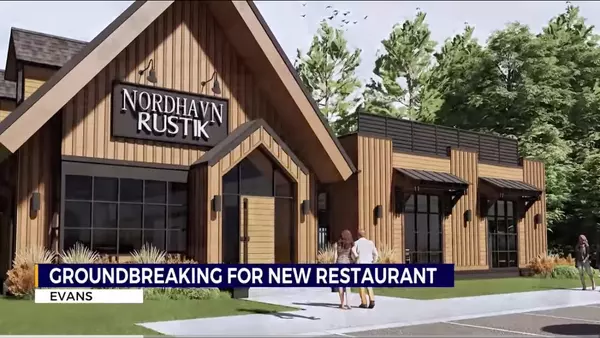Columbia County’s Proposed “Data Center (D-C)” Zoning District: What Just Happened, What’s In It, and What It Means Next

If you’ve been following my videos on TikTok you’ve seen me hit this topic hard: Columbia County is moving to create a dedicated Data Center (D-C) zoning district. This is one of those “boring on the surface, huge in impact” stories. It’s not a single project approval. It’s the rulebook that would control where and how any future data centers could be considered. And this week, the process took another step forward.
Below is a clean, factual breakdown of what’s happening, what’s actually in the draft text so far, and where we go from here, plus a bit of my take at the end. (If you’re a homeowner, builder, or just someone who cares about how our area grows, this one’s worth your time.)
The current status in one minute
-
On November 7, the Columbia County Planning Commission recommended that the county move forward with a draft ordinance establishing a D-C (Data Center) zoning district. That recommendation now moves to the Board of Commissioners. The Augusta Press
-
The first reading of the proposed ordinance is scheduled for the Board’s Tuesday meeting this week at 6 p.m. at the Evans Government Center (Board meetings are on the 1st and 3rd Tuesdays; the next one is Nov. 18, 2025). The Augusta Press+2columbiacountyga.gov+2
-
Creating the D-C district does not automatically rezone any property and does not approve any specific data center. It simply creates a bucket in the code. Any actual site would still require a separate application, public hearings, and votes. https://www.wrdw.com
Why the county is even doing this
The county’s own brief explains that staff assembled a set of draft sections; Allowed Uses, Lot & Structure Requirements, Use Provisions, and Buffers & Screening, to formalize how data centers would be handled if one is proposed later. The intent is to replace ambiguity with a standard, public, repeatable process. In plain English: rules first, projects later. columbiacountyga.gov
Multiple local outlets have covered months of back-and-forth between residents and officials. The thread running through all that coverage is the same: people want clarity about noise, buffers, infrastructure, and where this kind of use belongs; county leaders want to get those answers into the code before they’re facing an up-or-down vote on a specific site. Augusta Chronicle+1
My read: whether you love or hate the idea of data centers, having standards in black-and-white beats “we’ll figure it out later” every time. You can’t enforce what you haven’t defined. (Opinion)
What happened at the Planning Commission
The Planning Commission met the week of Nov. 6–7 and recommended approval of the draft ordinance for a new data-center district. Local reporting recapped the meeting and flagged several notable proposed standards (more on those below). That recommendation is advisory; the Board of Commissioners is the body that ultimately adopts or rejects code changes. The Augusta Press+1
If you want to watch the feel of the conversation, the county meetings and related clips are posted online. Even a quick scan gives you a sense of the community interest and the care (and heat) around details like setbacks, sightlines, and decibel limits. YouTube+1
What’s in the draft (as of now)
The county’s official “News Flash” post links the draft sections by code number and title. These are the working building blocks of the proposed D-C district. Here are the highlights you can verify today: columbiacountyga.gov
-
Section 90-97 — Allowed Uses
-
Section 90-98 — Lot & Structure Requirements
-
Section 90-101 — D-C (Data Center) District
-
Section 90-147 — Use Provisions
-
Section 90-139 — Buffers & Screening
Local reporting adds more context about the operational standards discussed in the public meetings, including:
-
A 70-decibel noise ceiling (measured at the interior of the required buffer).
-
Buffers of 500 feet from residential properties and 250 feet from other roads.
-
Potential buffer reductions by half if a developer installs a berm and provides a sight study showing the facility would not be visible to nearby properties. The Augusta Press
A county-posted draft of Use Provisions also includes the 70 dB noise standard in black-and-white text, along with requirements to submit a sound study at the time of rezoning. That’s the clearest, most direct evidence of the noise framework in play. tax.columbiacountyga.gov
My take: the noise limit and buffer language are the backbone for neighborhood compatibility. If those two guardrails are watered down later, the rest of the ordinance won’t carry the same weight. (Opinion)
What the ordinance does not do
Let’s be super clear on this, because it’s exactly where misunderstandings start:
-
It does not approve any specific data center. This is a text amendment, not a site plan. If a company wants to build, they still have to file applications, bring studies, stand in a public hearing, and earn a vote. https://www.wrdw.com
-
It does not rezone any land by itself. Creating the D-C district just adds a zoning category to the code. Any parcel that wants to use it would have to be rezoned into D-C via the usual process. https://www.wrdw.com
-
It does not back-apply to previously approved rezonings unless the text says so. Reporting has emphasized that the county is aiming these rules at future data centers. That’s been part of the debate: people want to know how this interacts with earlier approvals, and officials have repeatedly said this draft is about what comes next. Yahoo
Why these particular standards matter (the practical angle)
Noise (70 dB).
That number gives staff and neighbors something objective to measure. Importantly, the draft language ties the measurement to the interior of the required buffer and requires a sound study with the rezoning application. It’s not just “don’t be loud” it’s “prove it, on paper, with a baseline and mitigation if needed.” tax.columbiacountyga.gov
Buffers (500’ / 250’ with possible reductions).
Buffers are not just about distance; they’re about visibility and perception. Allowing reductions if a berm is installed anda sight study shows the facility can’t be seen is basically the county saying: “You can come closer, but you have to hide the ball.” That’s a design challenge, not a loophole. The Augusta Press
Use Provisions / Allowed Uses.
By codifying what counts as a data center and what accessory uses are permitted, the county is reducing gray areas (e.g., “Is this substation allowed here?” “What about generator testing?”). The posted Use Provisions template is what keeps these debates from being reinvented every application cycle. columbiacountyga.gov
What this means for homeowners, buyers, and builders (right now)
-
No immediate property changes. Passing a first reading doesn’t change anyone’s zoning or approve a facility. https://www.wrdw.com
-
Clearer expectations are coming. Whether you plan to invest, sell, or build, a defined district gives you something predictable to underwrite and plan against. columbiacountyga.gov
-
Participation window is open. If you want to weigh in on the specific language i.e. noise, buffers, studies, now is the time to email comments or show up at the Board readings while text can still be refined. columbiacountyga.gov
My take: homeowners usually hear about this stuff after the vote. If you want your comment to count, don’t wait for the post-mortem Facebook thread. Send it now while Commissioners are still word-smithing. (Opinion)
My take (clearly labeled opinion)
I’m not here to cheerlead for or against data centers because they have some great pros (like HUGE revenues for the county which would improve quality of life in one sense) but also equally as imporant cons (like wildlife distruption and massive water/power usage potentially inflating power bills). What I am here to do is help people navigate what’s actually in front of us. On that standard, this D-C district is the right kind of homework. It define what counts, where it goes, how loud it can be, and how hidden it needs to be, before someone is asking for a yes or no on a specific site.
If you live near potential industrial corridors or utility spines, dig into the packet when it posts and look closely at the measurement points (where the decibel reader sits), the buffer interior definition, and the sight study methodology. Those are the levers that determine whether the paper standard works on the ground.
From a real-estate perspective, clear rules are better than a mystery box. They reduce surprises for buyers and sellers and keep us from relitigating the same issues at every single hearing. (Opinion)
Sources
-
Columbia County “News Flash”: draft ordinance sections and instructions for following agendas. columbiacountyga.gov
-
WRDW/WAGT coverage of the ordinance and meeting timeline. https://www.wrdw.com+3https://www.wrdw.com+3https://www.wrdw.com+3
-
The Augusta Press update on the Board’s first reading date and draft standards recap. The Augusta Press
-
Draft Use Provisions text including the 70 dB standard and sound-study requirement. tax.columbiacountyga.gov
-
Photo/report packages and meeting footage showing public comment and the Planning Commission recommendation.
Categories
Recent Posts








"My job is to find and attract mastery-based agents to the office, protect the culture, and make sure everyone is happy! "
